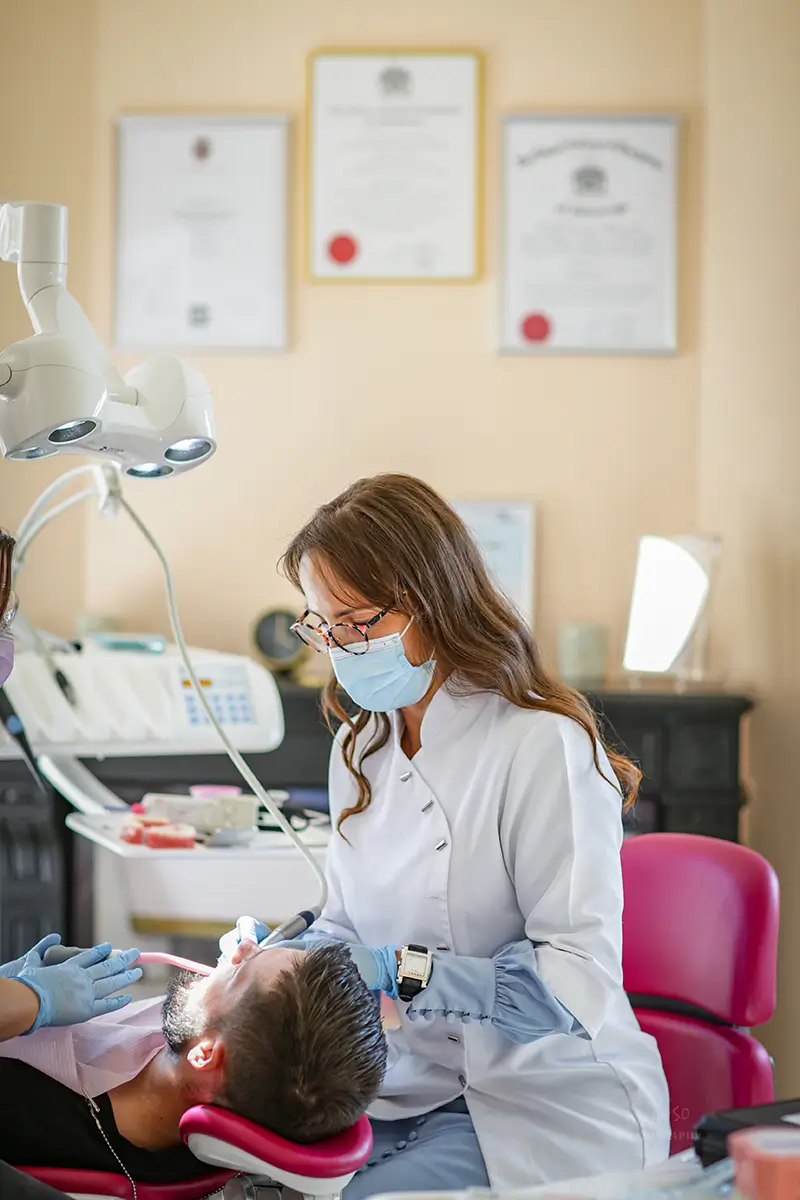
There are many reasons why an adult might want orthodontic treatment. It could be to correct a tooth alignment problem caused by an accident, to treat a malocclusion, or to improve the appearance of their smile for aesthetic reasons.
If you have always wanted to improve the appearance of your smile, but are concerned about the impact of treatment on your life, Invisalign® is for you!
The treatment is administered and supervised from start to finish by Dr. Victoria Masserey Klimovich, a specialist in invisible orthodontics.
The cost is affordable and most complementary insurances offer reimbursement up to 75%.
Invisalign aligners are well-fitted, transparent, and invisible, easy to put on and take off. The treatment lasts from 6 to 24 months.
Invisalign treats the complete alignment of your dental arches, allowing for the correction of most malocclusions.

Make an appointment with Dr. Victoria Masserey Klimovich. She conducts a comprehensive assessment with radiographs of your teeth.
A 3D scan of your teeth and gums is performed. You can already see a simulation of your future smile on the screen.
Dr. Klimovich gives you your series of aligners. You wear them for about 20 hours a day and change them according to the treatment plan, every 7 or 10 days.
You observe the alignment of your teeth over the days and then enjoy a brand-new smile in just a few months.

The photos below allow you to see the type of results you could achieve with Invisalign aligners. Use the slider in the middle to move across the photo and see the before/after of our patients’ teeth.




















At the end of orthodontic treatment, teeth reach ideal alignment and the orthodontic appliance is removed. However, a crucial phase follows: stabilization of the teeth.
This step usually takes between one to two years in children, during which time the teeth and jawbone readjust to maintain the new alignment. In adults, where bone growth is practically nil, the need for retention is often permanent to preserve the treatment results.
The realization of this retention is commonly done using transparent aligners, similar to those used in Invisalign correction systems. These aligners are designed to precisely fit the new dental arrangement, providing discreet and effective maintenance.
Alternatively, a retention wire can be installed on the inner surface of the teeth, offering a fixed and nearly invisible solution. The main goal of retention is to ensure that the teeth remain in their optimal position, thus avoiding the risks of relapse or post-treatment displacement. This step is essential to ensure the longevity of the results obtained through orthodontics.